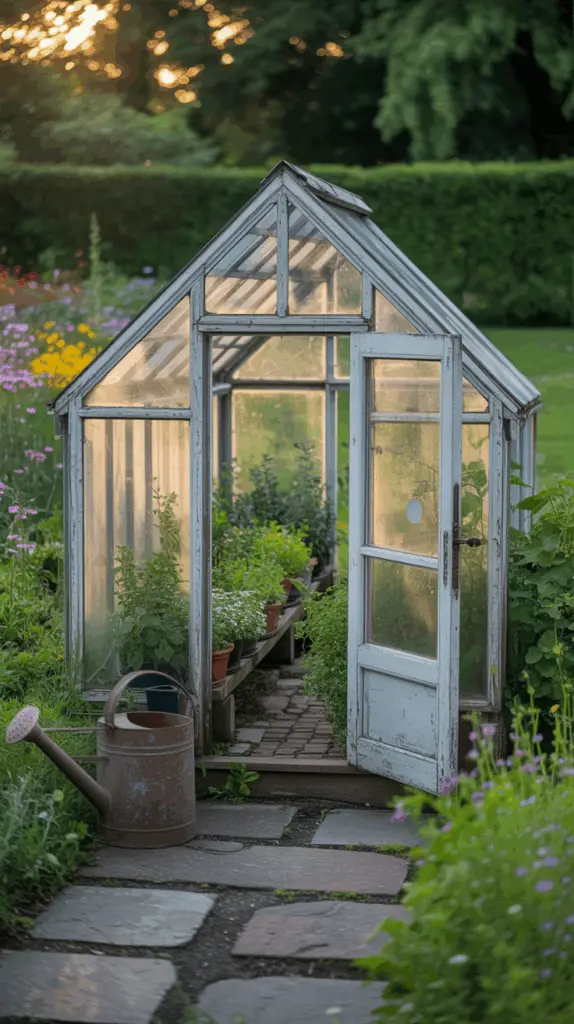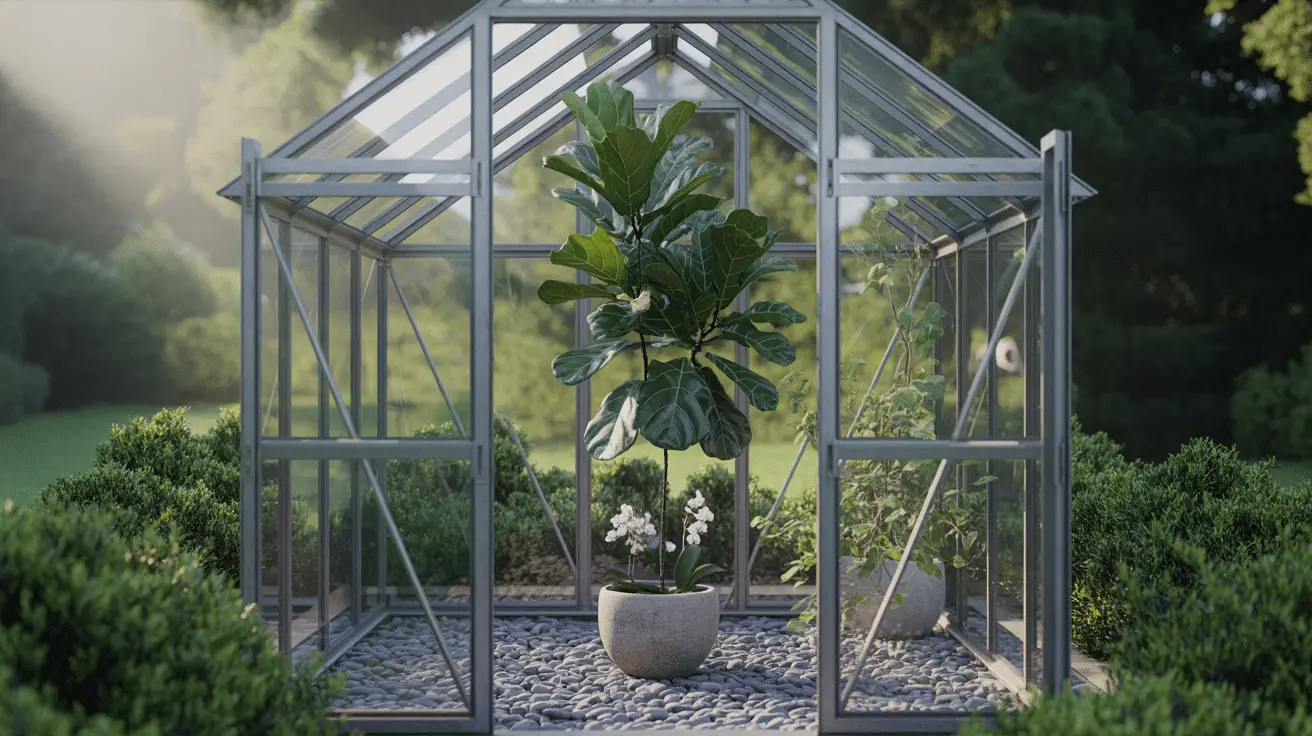DIY Small Greenhouse Plans: Build Your Own Garden Sanctuary for Year-Round Growth
Table of Contents
Introduction
Imagine stepping into a lush garden filled with vibrant plants, flowers, and vegetables all year round—no matter the weather outside. This dream can become a reality with a DIY small greenhouse. Whether you’re an experienced gardener or just beginning, building a greenhouse offers a multitude of benefits. It provides an ideal environment to extend your growing season, protect delicate plants from harsh weather, and cultivate an array of plants year-round.
In a world where sustainable living and homegrown produce are gaining popularity, a small greenhouse is a perfect addition to any garden. But how do you turn this dream into a reality? With the right plans, materials, and tools, creating your very own garden sanctuary can be simpler than you might think. This guide will provide step-by-step instructions for building a DIY small greenhouse, offer helpful design tips, and explore essential considerations to ensure your greenhouse thrives.
By the end of this post, you’ll have a comprehensive understanding of the process, from choosing the right location and materials to adding finishing touches that elevate your space. Let’s dive into how you can transform your backyard into a haven for plants and a peaceful retreat for yourself.
Why Build a Small Greenhouse?
Before embarking on your greenhouse project, it’s important to understand why this addition to your garden is worth the effort. A small greenhouse is not just a functional structure; it’s an investment in your gardening passion and a way to enhance your lifestyle.
1. Extended Growing Season:
A greenhouse provides a controlled environment that extends your growing season, allowing you to start seeds earlier in the spring and continue growing well into the fall or winter. For gardeners in regions with harsh winters, a greenhouse can make it possible to grow plants that otherwise wouldn’t survive in the cold.
2. Protection from the Elements:
A greenhouse shields your plants from unpredictable weather such as frost, heavy rain, or extreme heat. This protection helps ensure your plants remain healthy and productive throughout the year.
3. Increased Control Over Growing Conditions:
By building your own greenhouse, you gain full control over essential factors like temperature, humidity, and light. This allows you to grow a wider variety of plants, including those that require more specific conditions than your local climate can provide.
4. Cost-Effective Gardening:
Though the initial cost of building a greenhouse can seem high, it often pays for itself in the long run. You’ll save money on store-bought plants and produce, and you’ll be able to grow more of your own food. Additionally, a greenhouse reduces the need for pesticides and fertilizers by creating an environment that’s easier to manage.
| Benefit | Why It Matters |
| Extended Growing Season | Grow plants year-round, no matter the weather outside. |
| Protection from the Elements | Shield plants from extreme weather and frost. |
| Increased Control Over Growing Conditions | Tailor temperature, humidity, and light for optimal growth. |
| Cost-Effective Gardening | Save money on store-bought produce and plants in the long run. |
Essential Considerations for Your Small Greenhouse
Before you start building your DIY greenhouse, there are several key factors to consider. Planning ahead will help ensure your greenhouse is both functional and long-lasting.
1. Location:
Choose a location that gets plenty of sunlight, ideally 6-8 hours a day. A south-facing site is usually the best, as it ensures maximum exposure to sunlight. Make sure the area is flat and free of large trees or structures that might block the sun.
2. Size and Shape:
The size of your greenhouse should depend on your available space and the type of plants you plan to grow. Small greenhouses come in various shapes, including rectangular, lean-to (attached to a wall), and A-frame styles. The right choice depends on your preferences and the layout of your garden.
3. Budget:
Set a clear budget for your greenhouse project. While DIY greenhouses can be more affordable than buying pre-built kits, materials can add up quickly. Consider what materials will fit within your budget and choose accordingly. You’ll need to account for the foundation, frame, glazing, and any accessories like shelving or ventilation systems.
4. Materials:
There are a variety of materials to choose from when building a greenhouse. Wood, PVC, and metal frames are popular options. The glazing (the covering of the greenhouse) can be made from glass, polycarbonate, or polyethylene. Each material has its pros and cons, depending on factors like durability, insulation, and cost.
| Consideration | Why It Matters |
| Location | Ensures optimal sunlight and growing conditions. |
| Size and Shape | Choose the right size based on your space and plant needs. |
| Budget | Plan your materials and construction according to your budget. |
| Materials | Select the best materials for structure, durability, and insulation. |

Step-by-Step Guide to Building Your Own Greenhouse
Building a small greenhouse from scratch may seem like a daunting task, but with the right tools and materials, it’s a highly rewarding project. Here’s a step-by-step guide to help you through the process.
Step 1: Preparing the Foundation
The first step in building a greenhouse is preparing the foundation. A solid foundation will ensure your greenhouse is stable and long-lasting. Choose between a concrete, gravel, or pressure-treated wood foundation, depending on your budget and soil conditions.
Step 2: Constructing the Frame
Once the foundation is in place, start assembling the frame. If you’re using wood, make sure it’s weather-resistant, like cedar or redwood. For a PVC frame, use sturdy PVC pipes that are durable and flexible enough to withstand the elements. Metal frames are the most durable but can be more expensive.
Step 3: Adding Glazing
The glazing is what allows sunlight to enter and keep your plants warm. Glass is the most traditional option, but polycarbonate or polyethylene plastic are cheaper alternatives that offer good insulation. Carefully install your chosen material, ensuring there are no gaps where cold air can enter.
Step 4: Installing Doors and Ventilation
A well-ventilated greenhouse is essential for regulating temperature and humidity. Install doors and windows for airflow, and consider adding automatic vents for convenience. This will help prevent overheating during warmer months.
Step 5: Adding Shelving and Other Features
Once your greenhouse structure is complete, you can add shelves, hanging planters, or irrigation systems to make your space more functional. Choose shelves that are sturdy and won’t block airflow. You can also add hooks or racks for tools and gardening supplies.
| Step | Description |
| Preparing the Foundation | Lay a stable base with concrete, gravel, or treated wood. |
| Constructing the Frame | Build the frame with weather-resistant wood, PVC, or metal. |
| Adding Glazing | Install glass, polycarbonate, or polyethylene as your glazing. |
| Installing Doors and Ventilation | Ensure proper airflow with doors and windows for temperature control. |
| Adding Shelving and Features | Maximize space with shelves, irrigation systems, and hooks. |

Choosing the Right Plants for Your Greenhouse
Once your greenhouse is built, it’s time to think about the plants you want to grow. The plants you choose should align with the growing conditions inside your greenhouse, including temperature, humidity, and light levels.
1. Vegetables:
Greenhouses are ideal for growing vegetables that need a warm, consistent environment. Popular greenhouse vegetables include tomatoes, cucumbers, peppers, and leafy greens like lettuce and spinach.
2. Flowers and Herbs:
In addition to vegetables, you can also grow flowers and herbs in your greenhouse. Herbs like basil, parsley, and mint thrive in greenhouses, as do many types of flowers like geraniums and begonias.
3. Tropical Plants:
If your greenhouse is heated or located in a warm climate, you can grow tropical plants that require higher humidity levels and warmth, such as orchids, bananas, and exotic ferns.
| Plant Type | Why It Works |
| Vegetables | Greenhouses offer consistent conditions for vegetables like tomatoes and cucumbers. |
| Flowers and Herbs | Ideal for plants that thrive in a controlled, stable environment. |
| Tropical Plants | Perfect for warm climates and those with heating systems in their greenhouse. |
Maintaining Your Small Greenhouse
Once your greenhouse is up and running, it’s important to maintain it properly to ensure its longevity and the health of your plants.
1. Regular Cleaning:
Keep the interior clean by removing dead plants, weeds, and debris. This will help prevent the spread of disease and pests. Clean your glazing material regularly to ensure maximum light penetration.
2. Monitoring Temperature and Humidity:
Regularly check the temperature and humidity levels inside your greenhouse. Use a thermometer and hygrometer to ensure they’re within the ideal range for your plants.
3. Pest Control:
Pests can quickly become a problem in a greenhouse. Regularly inspect your plants for signs of infestation, and use organic methods like neem oil or insecticidal soap to control pests without harming your plants.
| Maintenance Task | Why It Matters |
| Regular Cleaning | Prevents disease, pests, and ensures optimal light levels. |
| Monitoring Temperature and Humidity | Ensures plants are thriving in the right conditions. |
| Pest Control | Keeps pests in check and maintains plant health. |
Conclusion
Building your own DIY small greenhouse is an incredibly rewarding project that allows you to create a personalized garden sanctuary. By extending your growing season, providing protection from the elements, and gaining full control over growing conditions, your greenhouse will enable you to grow a wide variety of plants year-round. Whether you’re an experienced gardener or a beginner, these simple steps will guide you in creating a functional and beautiful greenhouse. With proper maintenance, your greenhouse will be a long-lasting investment in your gardening future.

